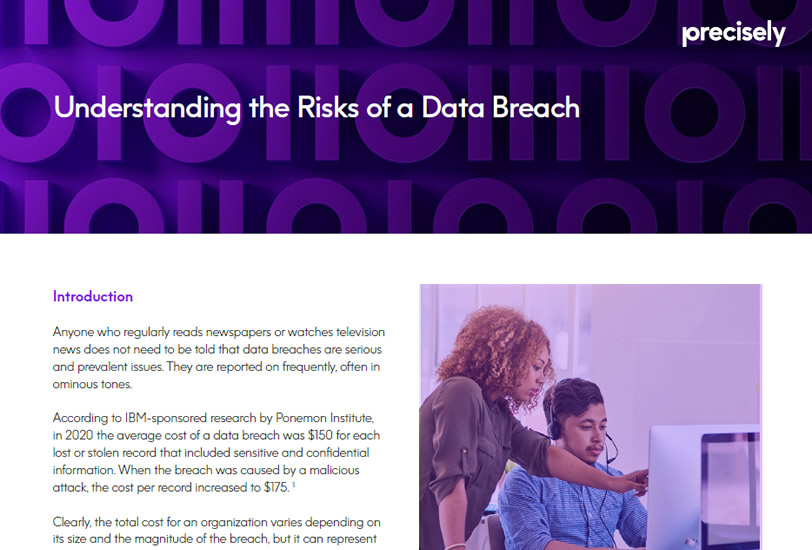White Paper
Understanding the Risks of a Data Breach
What causes a data breach and how to prevent them
Anyone who regularly reads newspapers or watches television news does not need to be told that data breaches are serious and prevalent issues. They are reported on frequently, often in ominous tones.
According to IBM-sponsored research by Ponemon Institute, in 2020 the average cost of a data breach was $150 for each lost or stolen record that included sensitive and confidential information. When the breach was caused by a malicious attack, the cost per record increased to $175. 1
Clearly, the total cost for an organization varies depending on its size and the magnitude of the breach, but it can represent a material portion of annual revenue.
And, keep in mind that many of the victim companies already had some level of data security in place—and, in many cases, a high level. The consequences could have been even more dire without it.
As familiar as you may be with these news stories and statistics, it is still important to take a step back and ensure you are familiar with exactly what data breaches are, what causes them, the costs your organization might incur as a result of them, and how you can prevent them. This white paper presents a
high-level overview of these topics.
The simplest definition of a data breach is:
Any incident that exposes data to an unauthorized environment. The affected data may or may not still be accessible to the victim organization after the breach. This definition holds whether the breach was caused by intentional or unintentional actions.
The breached data can include anything from relatively inconsequential personal files up to details of highly confidential health records and financial information.
To learn more about data breaches and what causes them, download this whitepaper.
1 IBM Security Cost of Data Breach Report – 2019 – (https://www.ibm.com/security/data-breach)
